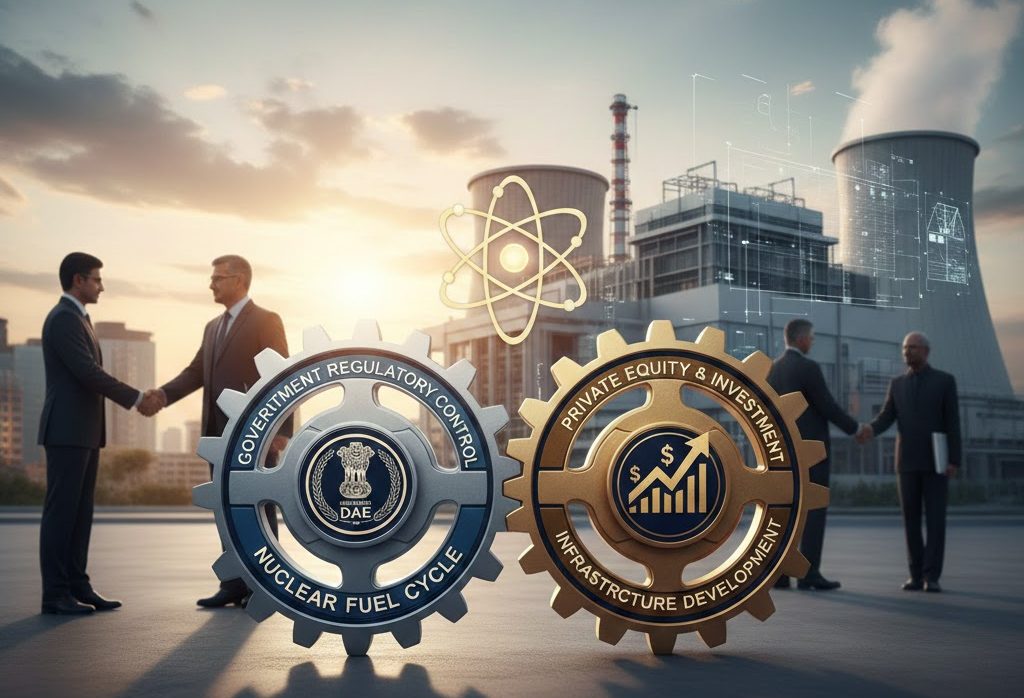Font size:
Print
ASEAN-BIMSTEC Partnership: A Framework for an Integrated and Prosperous Indo-Pacific
Context:
The ASEAN-BIMSTEC partnership is shaped by their overlapping geographies and shared Indo-Pacific challenges. ASEAN’s economic integration and leadership make it a key player in Southeast Asia, despite internal differences. BIMSTEC aims to connect South and Southeast Asia, addressing economic, maritime, and development issues in the Bay of Bengal.
Security and Economic Challenges in the Indo-Pacific
- Security Issues:
Strategic Significance of the Indo-Pacific
- The Indo-Pacific accounts for over 60% of global GDP, with nearly half of global trade passing through its waters.
- The region is critical for global trade, security, and resource access.
- Growing concerns over China’s strategic ambitions and maritime militarisation have intensified regional security challenges.
- The absence of strong institutions like NATO or the EU in the Indo-Pacific creates a gap in addressing multilateral security and economic issues.
- Militarisation of the South China Sea
- Piracy and illegal fishing
- Vulnerability of critical infrastructure like subsea cables
- Strategic rivalries between global powers (U.S.-China competition)
- Economic and Trade Concerns:
- ASEAN has an integrated trade framework, while BIMSTEC lags behind.
- Infrastructure and connectivity gaps hinder regional economic integration.
- High trade barriers and stalled FTA negotiations slow down progress.
ASEAN-BIMSTEC: A Potential Indo-Pacific Framework
- Combining ASEAN’s institutional strength with BIMSTEC’s strategic location in the Bay of Bengal can enhance economic and security cooperation.
- Reducing dependency on external powers and fostering intra-regional trade is critical.
- BIMSTEC can benefit from ASEAN’s connectivity and trade models to accelerate its integration.
- Collaboration can act as a counterbalance to China’s dominance, ensuring a rules-based regional order.
Sectoral Cooperation Between ASEAN and BIMSTEC
-
- Trade and Economic Integration
- ASEAN’s well-integrated trade ecosystem contrasts with BIMSTEC’s slower progress.
- Challenges to trade integration:
-
- High trade costs and logistical inefficiencies
- Weak special economic zones
- Under-resourced BIMSTEC Secretariat
-
- Strengthening regional institutions and adopting open regionalism can boost economic integration.
- Climate Adaptation and Resilience
-
- The Indo-Pacific faces severe climate-related vulnerabilities, including rising sea levels and intensified cyclones.
- BIMSTEC countries, where 40% of the population is engaged in agriculture, are highly susceptible to climate-induced risks.
- ASEAN’s institutional climate adaptation strategies can be a model for BIMSTEC’s climate resilience efforts.
- Focus areas:
- Climate-smart agriculture
- Disaster risk management
- Sustainable governance reforms
- Blue Economy and Maritime Cooperation
- Both ASEAN and BIMSTEC depend on the ocean for fisheries, renewable energy, and shipping.
- Strategic competition over critical sea lanes makes maritime governance crucial.
- ASEAN’s Blue Economy Framework provides a template for BIMSTEC’s engagement in marine resource management.
- Key priorities:
- Preventing overfishing and marine pollution
- Balancing economic growth with sustainability
- Public-private partnerships for maritime infrastructure
Challenges to ASEAN-BIMSTEC Cooperation
- Institutional and Policy Gaps
-
- ASEAN has a well-established Secretariat, whereas BIMSTEC faces resource constraints and weak policy coordination.
- Slow implementation of agreements limits BIMSTEC’s effectiveness.
- Enhancing policy harmonisation is essential to bridge institutional gaps.
- Political and Geopolitical Constraints
-
- Internal political instability in BIMSTEC nations (Myanmar, Bangladesh) creates barriers to regional cooperation.
- ASEAN faces competing interests among its members (Indonesia vs. smaller states like Laos and Cambodia).
- Great power competition (China vs. U.S.) influences regional policies, leading to divisions among member states.
- The militarisation of the Indo-Pacific and increasing naval presence complicate security cooperation.
- Economic and Infrastructure Disparities
-
- ASEAN members are better integrated into global supply chains, while BIMSTEC countries lag behind.
- High logistics costs and infrastructure gaps hinder seamless connectivity.
- The BIMSTEC Master Plan for Transport Connectivity requires substantial financing and implementation support.
Way Forward for ASEAN-BIMSTEC Cooperation
- Institutional Strengthening: BIMSTEC must enhance its Secretariat’s capacity, drawing lessons from ASEAN’s governance model.
- Policy Harmonisation: A structured approach to trade facilitation, infrastructure development, and climate governance is needed.
- Multilateral Coordination: ASEAN and BIMSTEC should align with initiatives like Quad and IORA for a comprehensive Indo-Pacific strategy.
- Maritime Security Collaboration: Joint naval exercises, information sharing, and anti-piracy measures can bolster regional stability.
- Sustainable Development Initiatives: Post-2030 priorities should focus on bridging digital divides, enhancing climate action, and promoting a resilient Blue Economy.
- Reducing External Dependence: Strengthening intra-regional trade and economic networks will lessen reliance on external powers.


